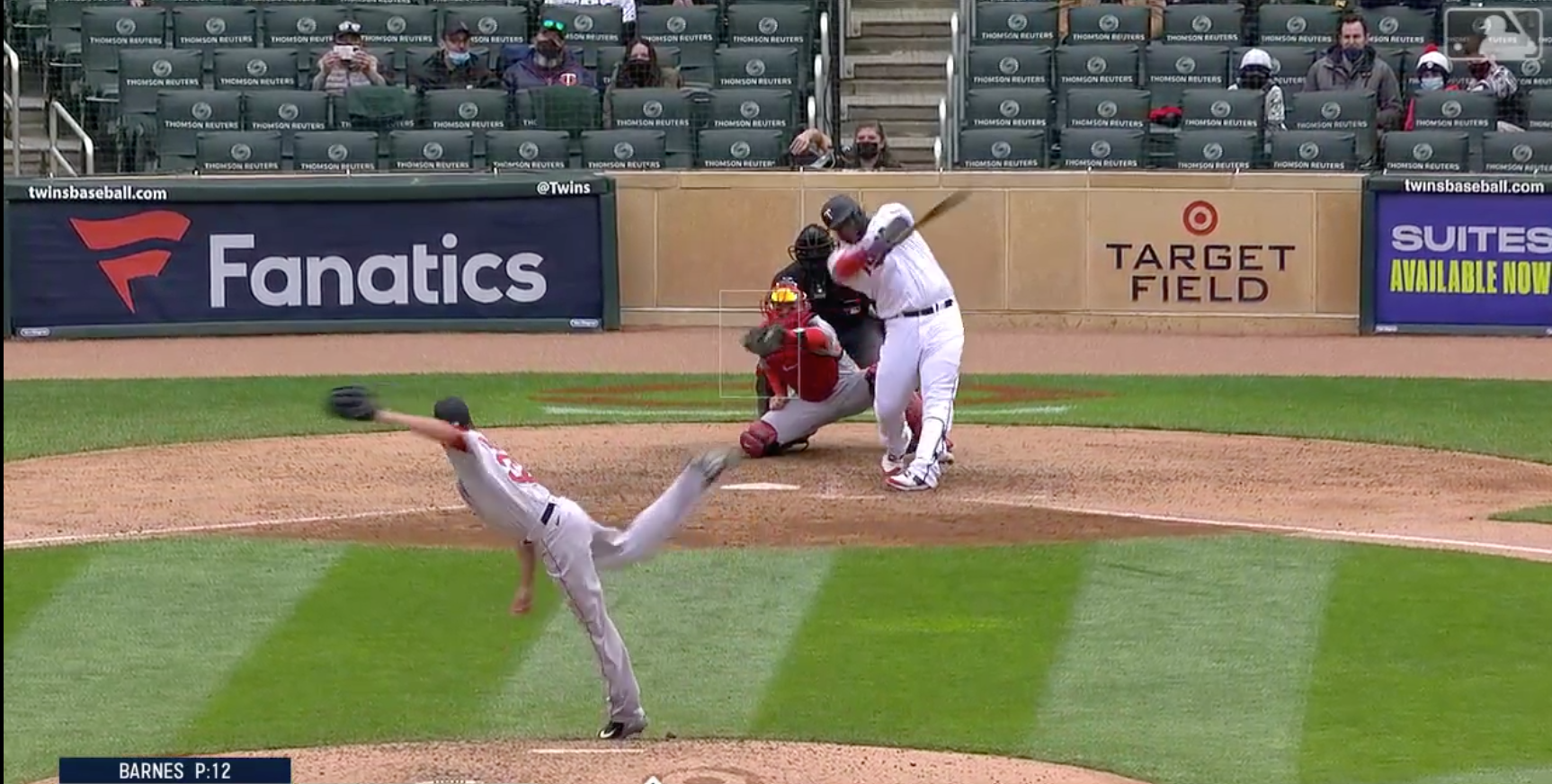After the Red Sox traded 2019 relief ace Brandon Workman to Philadelphia on August 21 of last season, Matt Barnes finished Boston’s forgettable and disastrous 2020 campaign in the coveted ninth-inning role with nine saves — tied with Cleveland’s Brad Hand and Houston’s Ryan Pressly for the most during that time period. For a team that only won 24 games, you’d think Barnes’ achievements would have made him the lead option to close games for the club in 2021. Seeing that the Red Sox bullpen finished with the fourth-worst team bullpen ERA at 5.79, Chief Baseball Officer Chaim Bloom and General Manager Brian O’Halloran targeted much-needed bullpen help, adding Adam Ottavino and Hirokazu Sawamura into the fold. Both relievers have closing experience, with Ottavino saving 19 games during his time in the big leagues and Sawamura closing out 75 games over his nine-year NPB career. Boston now had three guys capable of closing out a game. Then, when Barnes tested positive for COVID-19 towards the end of Spring Training, it made sense for manager Alex Cora to not name a closer entering the season. Since returning, Barnes has had a lights-out start to 2021, striking out 14 while only walking two across seven scoreless innings (-0.36 (!) FIP), now cementing himself as the closer of the new, winning Red Sox.
What Have You Done For Me Lately?
Matt Barnes was the first pick (19th overall) of the Red Sox back in their famous 2011 draft, which included Jackie Bradley Jr., Mookie Betts, and Travis Shaw. Working a scintillating four-seam fastball and knee-buckling curveball in tandem, Barnes was an exciting prospect and would seemingly deliver on his draft position if he developed a third pitch. That pitch never came, and with an uncomfortable number of walks, Barnes was sent to the bullpen, allowing him to focus on making his best pitches shine.
Though Barnes had been a reliable reliever for a while in Boston, the right-hander still walked far too many to be considered in high-leverage spots consistently, walking at least 11% of batters in each of the last three seasons, including over 13% in the past two. Most of that comes from the spotty command of his four-seamer, as Barnes was either throwing it towards the middle of the plate or in non-competitive areas outside the zone.
From the right-hander’s debut till the end of the last season, Barnes threw 47.5% of his fastballs in the zone, under the 51.9% league average in that time period. This meant that he had to rely on his curveball to get strikes, though the breaker only landed in the zone 44.4% of the time — slightly above league average at 43.6% — but, nevertheless, was not enough to keep opposing hitters from drawing free passes.
What has made Barnes so spectacular to start 2021 is the exceptional job he’s done placing his four-seamer at the top of the zone.
That heatmap not only shows Barnes’ pinpoint accuracy up but how often he’s pounding the zone with the heater.
| 2014-2020 | 2021 | |
|---|---|---|
| O-Swing | 24.9% | 56.5% |
| Zone | 47.5% | 54.9% |
| SwStr | 11.6% | 21.6% |
| Put Away | 13.30% | 33.3% |
While the sample size is small, the significant increase in zone rate on the heater means that he’s able to gain more strikes — including of the swinging strike variety — at a whopping 21.6% rate so far.
Furthermore, it allows the right-hander to hunt for whiffs and put away hitters with his power curveball, something he has succeeded in doing so far this season.
| 2014-2020 | 2021 | |
|---|---|---|
| O-Swing | 31.6% | 55.6% |
| Zone | 44.4% | 35.7% |
| SwStr | 16.0% | 35.7% |
| Put Away | 23.50% | 35.7% |
While you’d like to see more curves thrown in the zone as the season progresses — the only criterion to fulfill for the breaker to be a Money Pitch — the O-Swing and SwStr rates show that Barnes is still dominating with the pitch.
With the success Barnes has had so far in 2021, it’s a wonder why it’s taken so long to figure out.
Working North-South
In Spring Training, Barnes mentioned that he had two goals for this season — to work on his mechanics and to increase the tempo between pitches. While the second isn’t quantifiable for the purposes of this piece, the former can most definitely be discussed.
Barnes notably starts with his glove at his belt buckle now when in the set position, where in seasons past he’d kept his hands near his chest.
2020:
2021:
While there could undoubtedly be a benefit to keeping his hands lower and repeating that same delivery more often, there is something else I noticed.
Here are two clips of Barnes’ delivery on four-seamers — the first from 2019 and the second from this year.
The difference between the two is subtle yet significant. At live speed, his 2019 delivery seems slightly more violent than more recently, so I decided to pause each video when the ball reaches the catcher’s glove.
In what is easily discernible, Barnes falls significantly closer to the first base dugout in the first compared to the second, where the former displays a collapsed front leg while the latter has a braced one. Additionally, the lead foot is fully planted in our second pitch, while the first is slightly lifted.
For a pitcher like Barnes, featuring a four-seamer and 12-6 curveball, the term ‘working north-south’ will be used often in how he approaches hitters, but the term can also take on how Barnes is approaching the plate in his mechanics. For any pitcher, you want to direct as much energy as possible towards the plate. That does not mean entirely excluding the rotational aspect, as your hips and torso both require significant torsional momentum to maximize the velocity your body can produce. However, working in the manner Barnes was meant that the fastball command would be streaky, depending on how he was able to replicate the release point that would end up in a strike, which is reflected in the fastball heatmap we saw earlier. It also explains how Barnes started off the 2019 season — the clip we saw is dated April 9 — with a 2.08 ERA (2.66 FIP/ 1.59 xFIP) through the end of May (21.2 IP), yet finished the year with an ERA approaching four (3.78).
Now, you might be thinking that Barnes has found some newfound mechanics that will make him more successful, but that isn’t necessarily the case. Here, we see a fastball from Barnes in 2020.
Again, we’ll show what Barnes looks like when the ball reaches the catcher’s glove.
While the leg is braced here, you can also see that the foot is off the ground. At live speed, this shows how Barnes is overthrowing — again, an issue that leads to ‘spraying’ of pitches.
Let’s take yesterday’s outing in the first game of the doubleheader against Minnesota.
Barnes’ fastballs are all over the map here, and we can again see the reason why on the fastball here to strike out slugger Miguel Sanó.
Despite the positive result, this is not what we want from Barnes. With the lead foot partially off the ground, this is yet another instance of overthrowing.
Conclusion
Through the short time we’ve seen Barnes this season, the right-hander has been absolutely amazing. The driving force behind Barnes’ success comes from working ‘north-south’ and refraining from being too rotational in his delivery. But, as we’ve documented so far, Barnes has still found ways to lose the shape of his delivery by overthrowing. Part of that is from having varying mechanics and failing to repeat it on a consistent basis. Some of this can also be potentially attributed to fatigue, which reflects his career norms — performing well in April, May, and July while struggling in June and August. In this case, Cora will need to continue to keep Barnes fresh through the season, and the nice showings from Sawamura (0.00 ERA, 5.1 IP) and Rule 5 draftee Garrett Whitlock (0.00 ERA, 5.2 IP, 8 K) mean that there are options to close out games now and then. But, Barnes should be the driving force of a surprising Red Sox team by finishing out games as their ‘new’ closer.









Really interesting and educational write-up. Thanks for this!